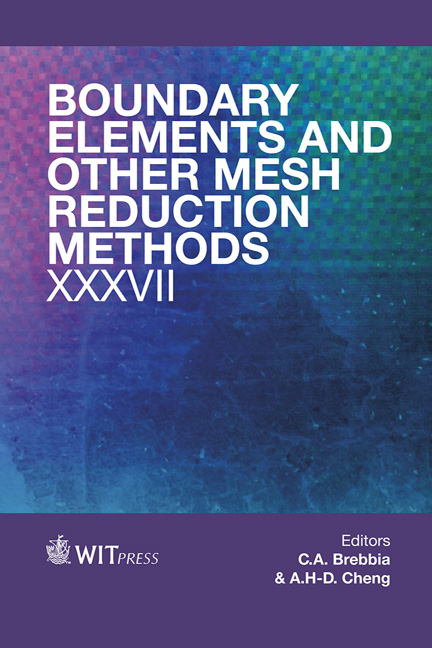The Hypersingular Boundary Element Method Revisited
Price
Free (open access)
Transaction
Volume
57
Pages
13
Page Range
27 - 39
Published
2014
Size
364 kb
Paper DOI
10.2495/BE370031
Copyright
WIT Press
Author(s)
N. A. Dumont
Abstract
This is the sequel of a paper presented at the BEM/MRM Conference four years ago, in which the conventional, collocation boundary element method was reformulated by proposing a simple, however consistent derivation on the basis of the weighted-residuals statement. It was shown that the single-layer potential matrix G should be in general rectangular and satisfy some spectral properties (orthogonality to the space of unbalanced boundary traction forces) in the same way as the double-layer potential matrix H is orthogonal to rigid-body displacements, when modelling a finite elastic body. Moreover, a “subtle” improvement was proposed for the interpolation of traction forces, in the case of curved boundaries, which was meant to just simplify the numerical implementation. In the present paper, it is concluded that the proposed improvement is in fact a necessary one if strict consistency of the formulation is required and more emphatically if a consistent hypersingular formulation is to be implemented. It is also shown that the correct hypersingular formulation requires that the discontinuous parts (two free terms) of the matrix H be obtained independently from the matrix G. Motivation of the present developments was the application of the hybrid boundary element method to strain gradient elasticity, which only makes use of the matrix H together with its hypersingular counterpart. Although this paper is of a rather theoretical nature, a simple numerical example is shown to illustrate the necessity of the proposed improvements.
Keywords
boundary elements, weighted-residual methods, hypersingular formulation, curved elements





